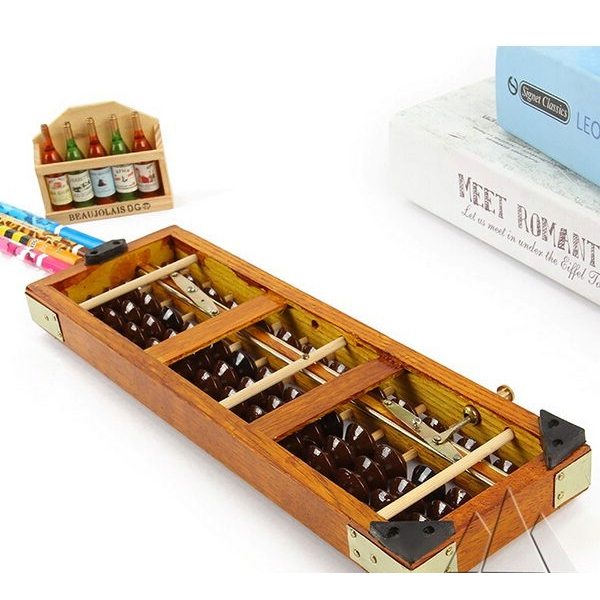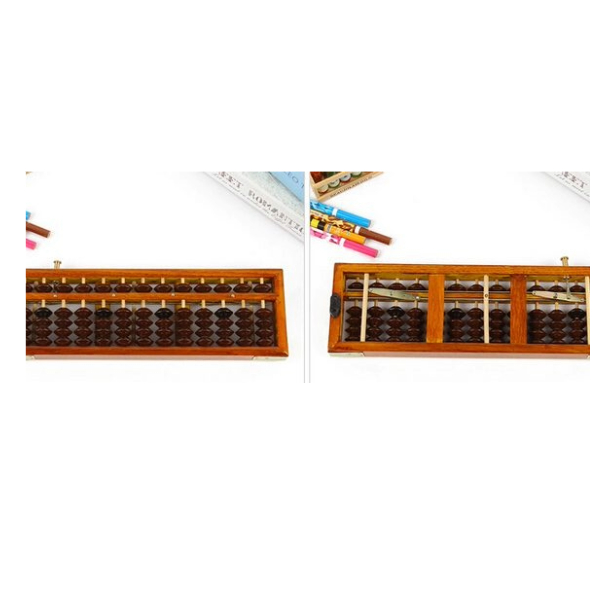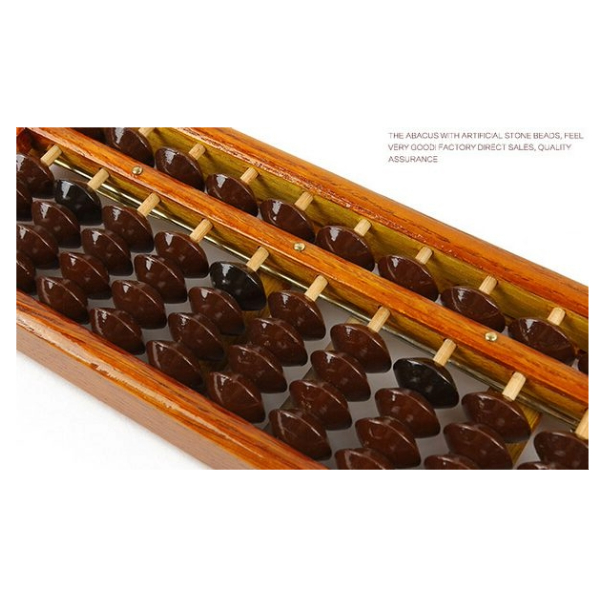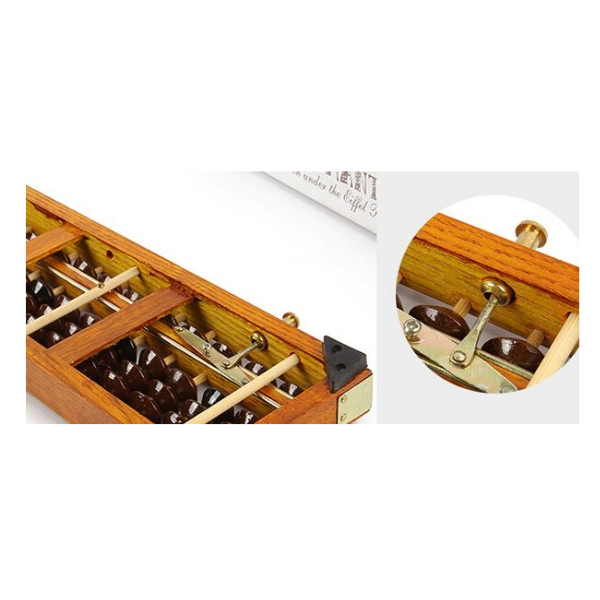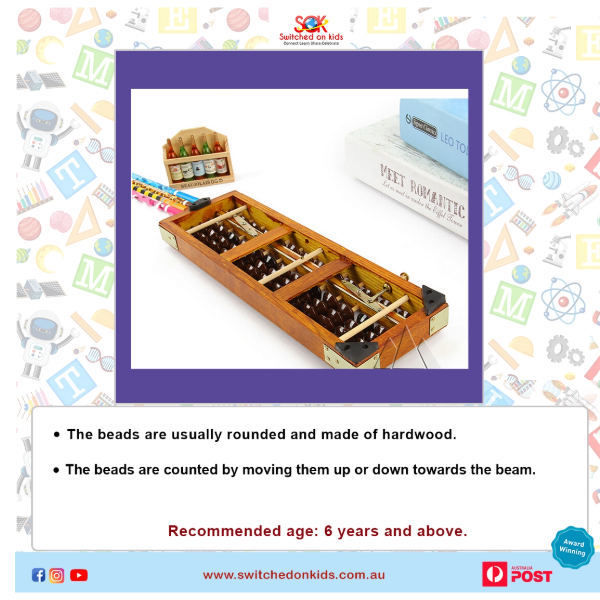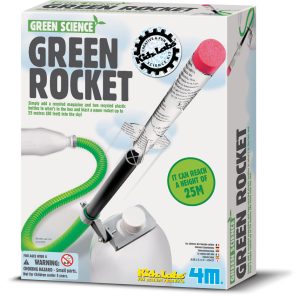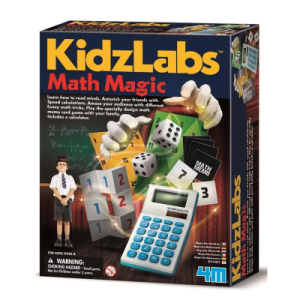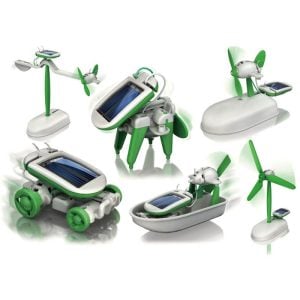Modern Abacus: The modern abacus was first used in China around 2nd BC. The Chinese abacus, known as the Suanpan “Counting tray”, Mandarin suàn pan, Cantonese sun 3 puns 4), is typically 20 cm (8 in) tall and comes in various widths depending on the operator. It usually has more than seven rods.
The beads are usually rounded and made of hardwood. The beads are counted by moving them up or down towards the beam. If you move them toward the beam, you count their value. If you move away, you don’t count their value.
The abacus is a computing device on which arithmetic calculations are performed by sliding counters (beads, pebbles, or flat discs) along rods, wires or lines. The instrument may have originated in the Middle East before the time of Christ. Small stones known as calculi, from the Greek helix, pebble, were moved along lines drawn in stone or sand. Our modern terms “calculate” and “calculus” come from the term calculi, while the word “abacus” comes from a Greek word meaning a board or slab, or a calculating table.
It is still unknown who built the first abacus and when it was built. There is evidence of the abacus used in Mesopotamia going back as early as 2700 B.C., for use with their sexagesimal numbering system. The abacus was also used in other early civilizations, including the Chinese, Egyptian, Greek, Persian, and Roman civilizations.
Before computers, calculators, or even arithmetic using paper and pencil, the abacus was the most advanced device for crunching numbers. Before the abacus, the only methods people had to use for their mathematical calculations were their fingers and toes, or stones in the dirt.
The best range of toys to learn and unique gift ideas for kids to light up their interest in math and calculations.
Recommended Age
educational toys for 6 year olds
 100% Australian owned
100% Australian owned




